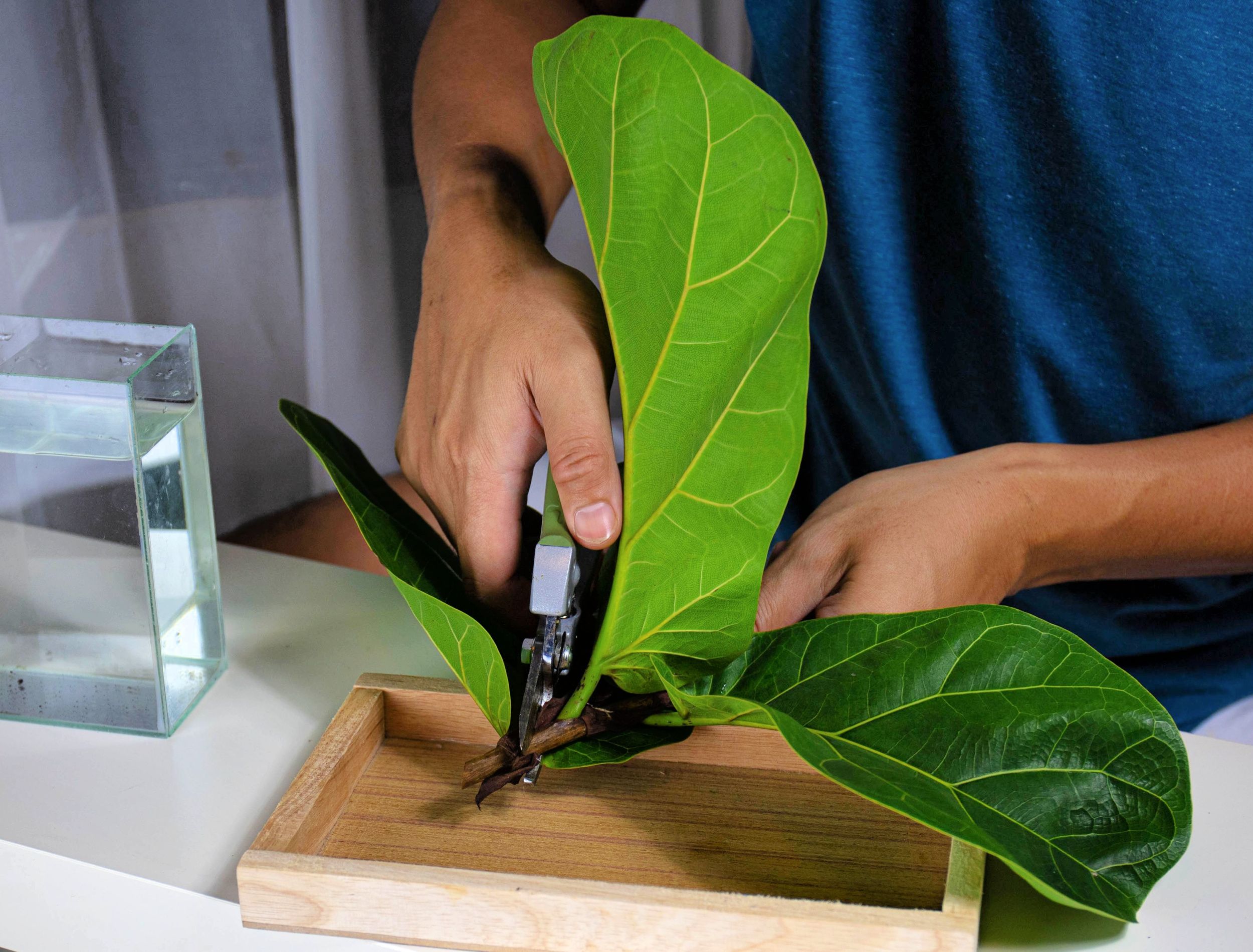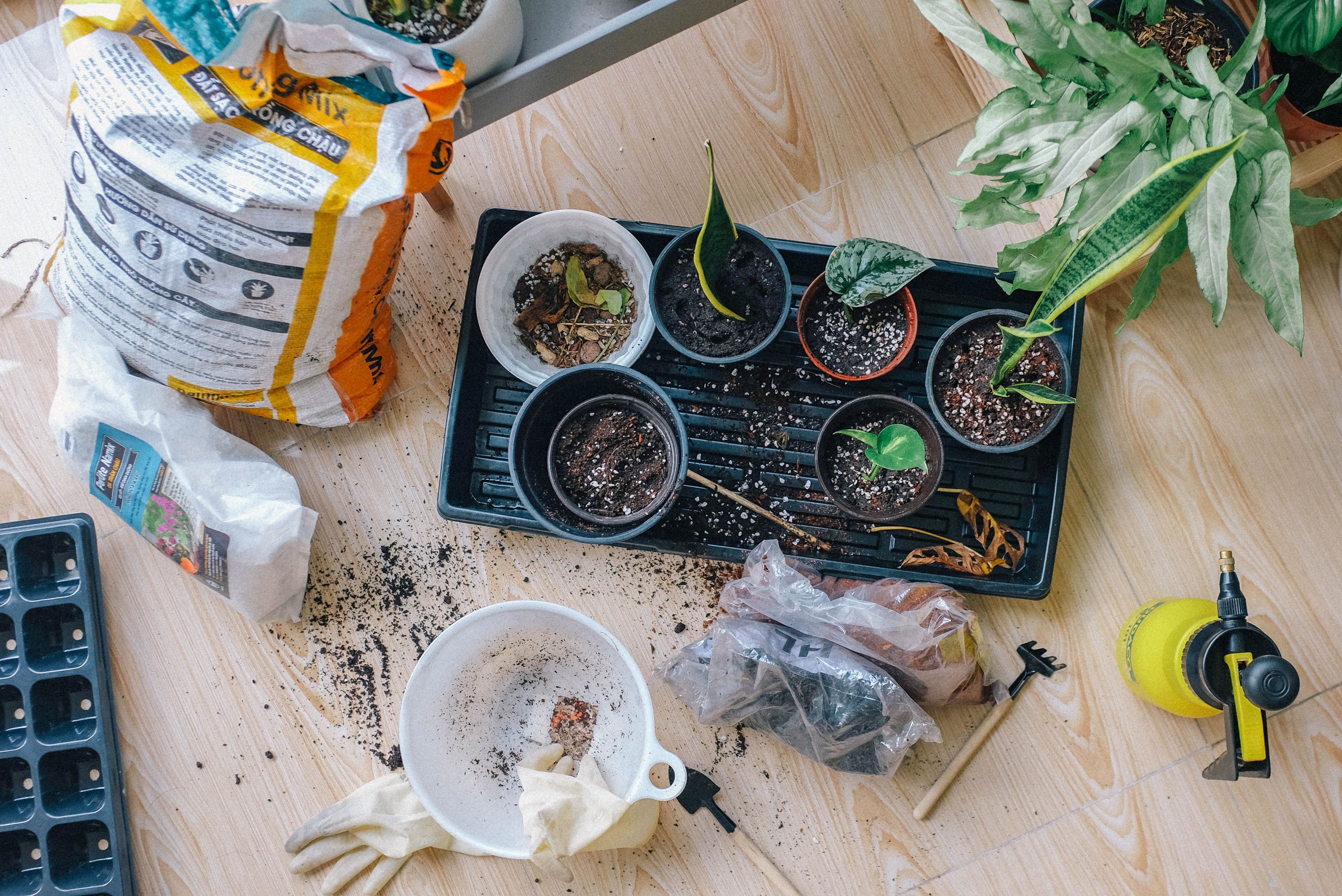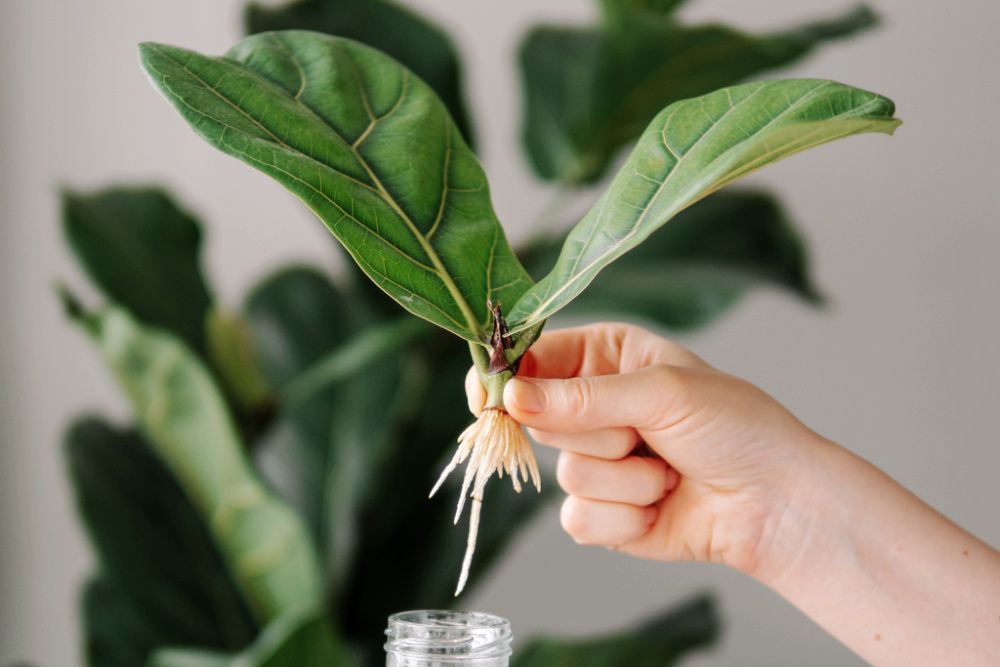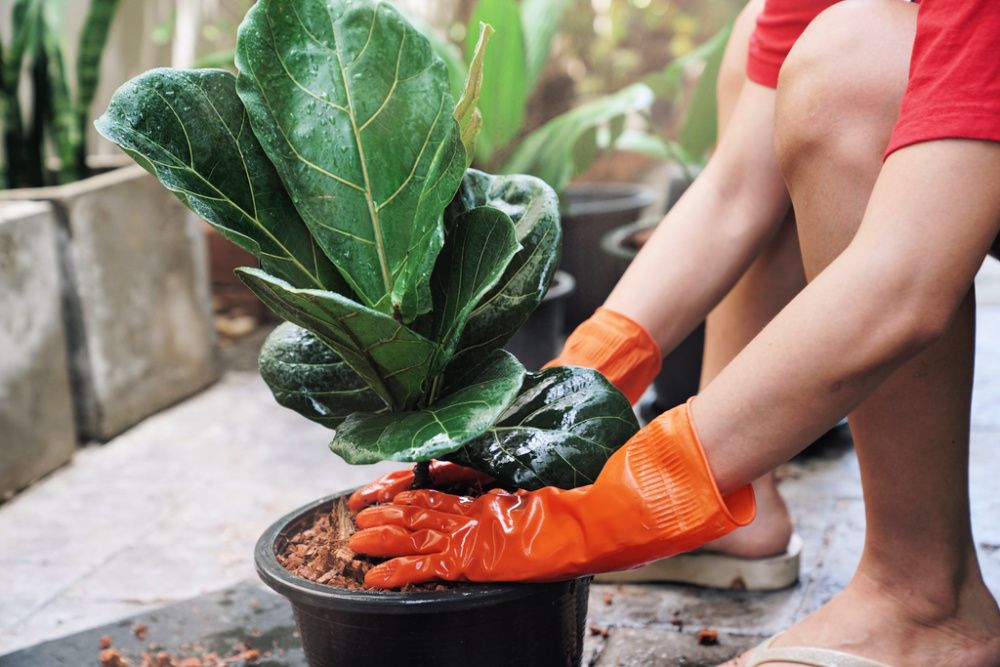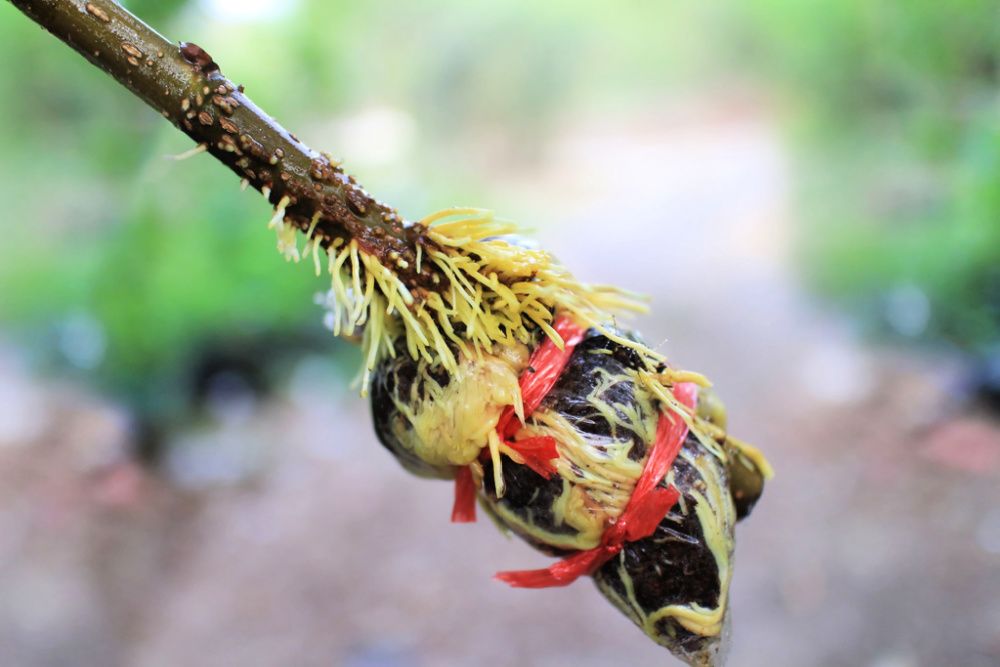Whether your fiddle-leaf fig tree (Ficus lyrata) plant is thriving and filling up the room or waning and you're looking for a last-ditch effort to save it, you may be interested in propagating a few branches.
That said, you may be wondering how to propagate your fiddle-leaf fig to grow new trees. Fortunately, there are three different methods to choose from that will make the process incredibly easy! Learn about everything you'll need and the step-by-step directions to each technique so you can select the one that's right for you.
Tools You'll Need
Image credits: Huy Phan via Pexels
Properly propagating your fiddle-leaf fig requires the right tools, though the list of essentials will change depending on your chosen method.
Option 1: In Water
- Pruning shears
- Glass jar or vase
- Clean water
- Root hormone (optional)
Option 2: In Soil
- Pruning shears
- Pot with drainage
- High-quality, well-draining soil
- Root hormone (optional)
Option 3: Air-Layering
- Sharp knife
- Rooting hormone
- Sphagnum moss
- Saran wrap
- Plastic-covered wire ties
- Misting bottle full of water
Propagating Your Fiddle-leaf Fig
You may want to propagate your fiddle-leaf fig tree when you prune it, if you want to save a few branches from a dying tree, or to spread the love. Fortunately, there's a method perfect for whatever you need! Generally, it is best to propagate in the summer during the growing season, as the plant has a better chance of growing roots and recovering.
Option 1: In Water
Image credits: ascinadora via Shutterstock
Putting cuttings in water is likely the most common option for propagation because it is so simple and low-maintenance! Trim a healthy stem or branch from your tree in your preferred size. Make sure there is a node, the small bump where buds develop on the plant. This is where roots will grow.
Use a pair of sharp, clean pruning shears to take the cutting. Then, fill your glass with clean water and place the cutting inside, ensuring you submerge the node but that the leaves don't get wet. Optionally, you can dip the stem in rooting hormone before placing it in the water. Remember to refill and change the water regularly to avoid bacteria buildup. Keep it in bright, indirect lighting and a humid environment, such as your bathroom.
In about three weeks, roots should begin to form. After about a month, you can repot the cutting in soil. Once transplanted, keep the soil moist for a few months to allow the roots to acclimate.
Option 2: In Soil
Image credits: Boonyadej Nannar via Shutterstock
Similarly to propagating in water, you'll need to trim a healthy branch with a node to propagate in soil. Trim off any leaves that are too close to the bottom of the stem so that you can place it about 3 inches deep in the soil. Use high-quality, well-draining soil, and pot with drainage, and place the nodes beneath the soil.
Optionally, you can dip the stem in rooting hormone before placing it in the soil. Doing so will result in a higher likelihood of roots forming. Be sure to gently pack the soil around the stem's base to hold it in place. Keep the soil moist and keep the plant in bright, indirect light for a few months to encourage root development. Once the plant begins to put out new growth, continue your regular care routine.
Option 3: Air-Layering
Image credits: kobkik via Shutterstock
Though it can be slow, air-layering requires little attention for success. Starting with a sharp, sterile knife, make a circumferential incision in a mature branch near the base of the tree. You will know a branch is mature when it is darker in color, is stiff, and has a more bark-like appearance than other branches. Remember to choose a stem with plenty of leaves.
Cut through the bark, which is brown, and the cambium and phloem layers, which are green in color. Avoid cutting through the xylem, which is white. Make another similar cut about 1.5 to 2 inches above or below the first cut. Carefully remove the bark between the two cuts.
Then, apply the rooting hormone to the bare area and place moist sphagnum moss on top. Wrap it with plastic wrap and hold it all in place with wire ties. Inspect every week or two and if the moss has dried out, remove the plastic wrap and spritz it with a misting bottle.
Essentially, the process stops mineral nutrients and water from flowing from the roots to the leaves and instead focuses the plant's attention on developing roots at the cut location. This makes it easy to snip off a branch that already has established roots and is ready for planting. You can plant after a few months when the branch develops plenty of roots.
Note: If the leaves on the branch die, you have cut too deeply and harmed the xylem. This means you will have to try again on another branch.
Go Figure!
You can transplant these cuttings into larger pots as they grow, placing them around your home or sharing them with friends. Whether you propagate in water, in soil, or try out air-layering, starting new plants from your healthy fiddle-leaf fig tree is super simple! All you need are the right tools and a little time and patience.
Do you have any tips for propagating? Share in the comments below!

